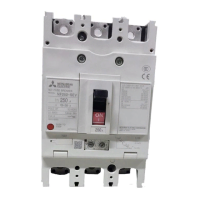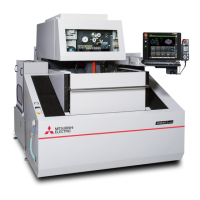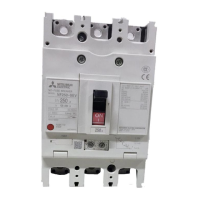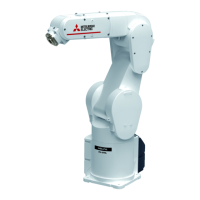
Do you have a question about the Mitsubishi Electric CP-30-BA Series and is the answer not in the manual?
| Series | CP-30-BA |
|---|---|
| Rated Voltage | 240VAC |
| Type | Circuit Breaker |
| Rated Current | 30A |
| Poles | 2P |
| Terminal Type | Screw Terminal |
| Mounting | DIN Rail |
Safety instructions for operating circuit breakers, including danger warnings for touching terminals.
Safety instructions for maintenance and inspection, emphasizing qualified personnel and power disconnection.
Safety instructions for electrical work, wiring, and correct connection of neutral wires.
General safety warnings for operation, maintenance, and inspection, including layman's work dangers.
Instructions on how to turn the circuit breaker ON/OFF using the handle, with operational notes.
Details on how moulded-case circuit breakers trip due to overcurrent and how to reset them.
Safety precautions before setting breaker characteristics, emphasizing qualified personnel and power disconnection.
Setting characteristics for electronic overcurrent tripping MCCBs, detailing groups A and B applicable models.
Setting characteristics for ETR electronic trip relay mounting circuit breakers, detailing terminal layout and setting method.
Setting characteristics for specific MCCB models (NFE2000-S, NFE3000-S, NFE4000-S) using scale setting method.
Setting inverse time-delay or instantaneous tripping for adjustable thermal/magnetic MCCBs, including terminal layout and method.
Switching voltage, sensitivity, and operating time for time-delay type ELCBs, covering multi-voltage and dual-voltage types.
Changing rated current, tripping, and leak tripping characteristics for electronic overcurrent tripping ELCBs.
Switching voltage, sensitivity, and operating time for ZBA, ZSA/ZHA/ZLA, and ZU earth leakage relays.
Measures and specifications for operating circuit breakers under non-standard conditions like low temperature, high humidity, and corrosive gas.
Guidelines for installing circuit breakers in various environments, including temperature, humidity, and corrosive gas considerations.
Detailed instructions for connecting circuit breakers, including terminal tightening torque and conductor handling.
Procedures for inspecting circuit breakers after tripping due to accidental current, including damage assessment and countermeasures.
Troubleshooting guide for common MCCB/ELCB issues like closing impossibility, abnormal operation, and temperature rise.
Troubleshooting guide for leakage operation issues, including simultaneous operation with closing and abnormal operation.











